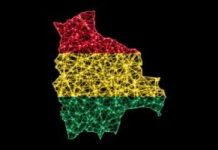In South Korea, the vice governor of the Bank of Korea (BOK), Ryoo Sang-dai, spoke about stablecoins. According to Sang-dai, the issuance of stablecoins should be allowed primarily through banks, before being gradually extended to other sectors.
South Korea: more security with stablecoins issued first through banks
The vice governor of the Bank of Korea (BOK), Ryoo Sang-dai, stated that the issuance of stablecoins in South Korea should occur first through the banks. Here are his exact words:
“It would be desirable to initially allow the issuance of stablecoins primarily through banks, which are subject to higher levels of financial regulation, and gradually extend it to the non-banking sector”
In practice, it seems that in South Korea, the adoption of stablecoins is increasing. In fact, BOK data states that transactions involving USDT, USDC, and USDS on Upbit, Bithumb, Coinone, Korbit, and Gopax, rose from 17.59 trillion won in Q3 2024 to 60.2 trillion won in Q4, before slightly decreasing to 57.9 trillion won in Q1 2025.
This is why Sang-dai intervened on the matter, arguing that by prioritizing banks over other sectors in the issuance of stablecoins, a safety net is more guaranteed.
“The objective is to create a safety net, considering the potential for market disruption or harm to consumers”
South Korea and the issuance of stablecoins pegged to the won
As it is now known, the stablecoins of Tether (USDT) and USD Coin (USDC) are pegged to the US dollar, and they are the largest stablecoins in the world by market cap.
What the vice governor of the Bank of Korea (BOK) is talking about, however, are the stablecoins pegged to the won. In practice, Ryoo Sang-dai’s observations come in a context where the administration of Lee Jae Myung is pushing for the adoption of stablecoins with nominal value in won. His goal is to modernize the financial system and curb capital outflows.
In this regard, however, Sang-dai also stated:
“The issuance of stablecoins based on the won could modify the fundamental position we have maintained on the liberalization of exchange rates and the internationalization of the Korean won. We must also consider the implications for the restructuring of the financial sector, including the potential introduction of narrow banking.”
The legislative proposal
The concerns of Sang-dai refer to the legislative proposal of South Korea, which arrived at the beginning of June.
In practice, this proposal aims to authorize the issuance of stablecoin by local companies.
This is truly an innovation implemented by President Lee Jae-myung, highlighting his commitment to the digital sector with his pro-crypto policies.
Specifically, the Democratic Party would have presented the Digital Asset Basic Act which allows national companies with the required qualifications to issue stablecoins. These requirements are a minimum capital of 500 million won (the equivalent of $367,000) and the obligation of adequate coverage to ensure the convertibility of digital currencies.
The issuance of stablecoin requires approval from the Financial Services Commission (FSC), the South Korean financial authority.
Already at that time, however, the governor of the BOK, Rhee Chang-yong, had expressed his concerns about the bill proposal, also stating that such a possibility open to non-banking companies would have weakened the national monetary policy.







